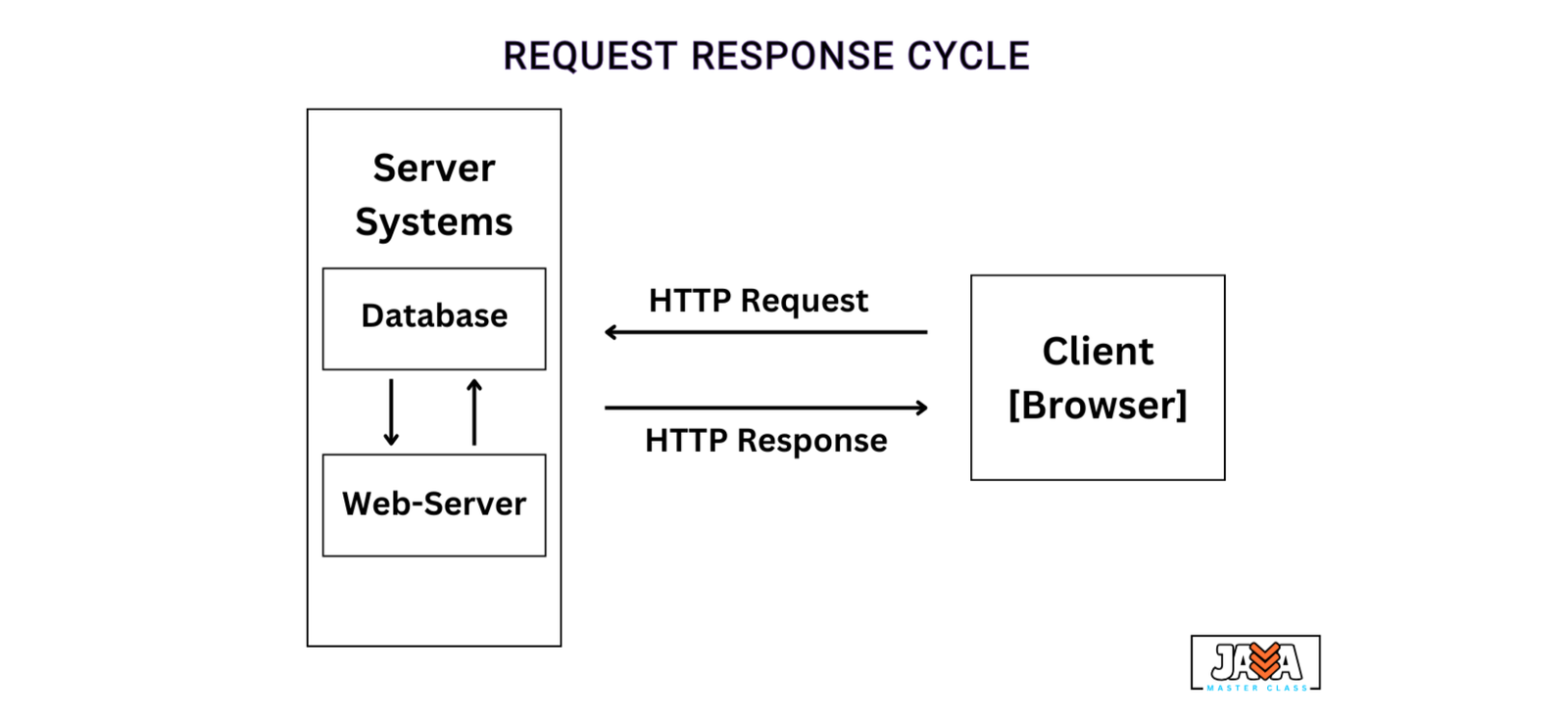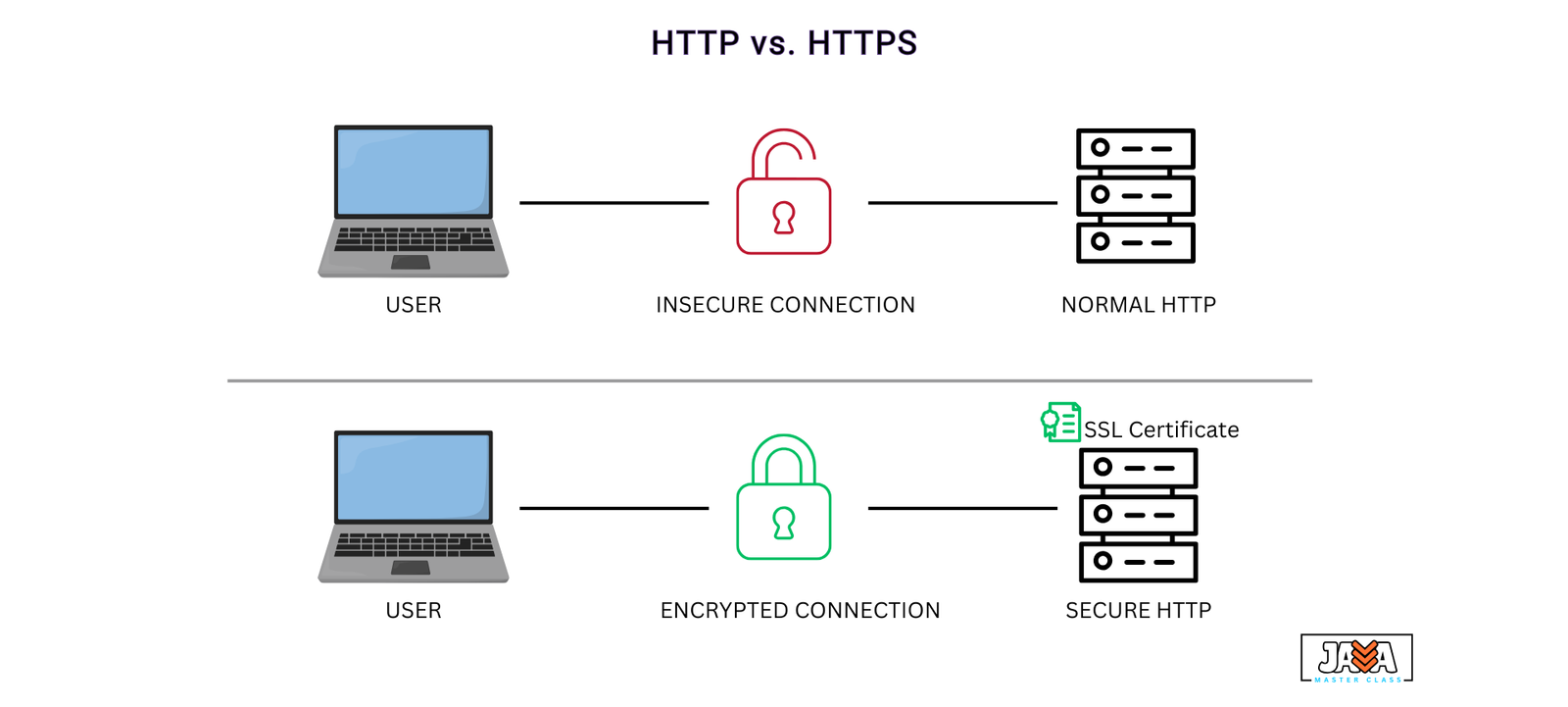The HTTP (HyperText Transfer Protocol) is the fundamental protocol used for communication on the Web. It defines how clients (such as web browsers) and servers interact to request and transfer data.
HTTP
HTTP is a request-response protocol, meaning that communication is based on clients sending requests to servers and servers responding with the requested data or status messages. It is the backbone of any web interaction – whether we’re loading a webpage, sending a form, or interacting with a web-based application.
- Client: The client is typically a web browser (like Chrome or Firefox) or any program that requests data from a server.
- Server: The server is where the website or application resides. It listens for incoming HTTP requests and processes them to generate responses.
Request-Response Cycle

The communication between the client and the server is a cycle of requests and responses:
Client Request: When a user enters a URL in their browser or interacts with a website, the browser sends an HTTP request to the server. This request can be a variety of types, such as GET or POST, depending on the action.
- GET: Requests data from the server (e.g: fetching a webpage or an image).
- POST: Sends data to the server (e.g: submitting a form or logging in).
- PUT: Updates data on the server.
- DELETE: Removes data from the server.
Server Response: The server processes the request and responds with an HTTP response. This response includes:
- Status code: A number indicating the result of the request.
- Headers: Metadata about the response, such as content type (HTML, JSON, etc.).
- Body: The actual data being sent back (e.g: HTML content for a webpage, an image, etc.).
HTTP Methods
HTTP defines several methods that describe the type of operation the client wants to perform on the server’s resources. These methods are part of the request sent by the client.
- GET: The most common HTTP method. It requests data from the server without making any changes to the server’s resources. For example, when we visit a webpage, our browser sends a GET request to fetch the HTML content.
- POST: This method is used when sending data to the server, typically to submit a form (e.g., a login form or a registration form). The data is included in the body of the request.
- PUT: PUT is used to update existing resources on the server. For example, updating our profile information on a website might involve a PUT request to update our details on the server.
- DELETE: The DELETE method is used to remove resources from the server. This can be used to delete a user account or remove a specific item from a database.
Other methods include HEAD (similar to GET but doesn’t return the body), PATCH (partially updates a resource), and OPTIONS (describes the communication options for the target resource).
HTTP Status Codes
When the server responds to an HTTP request, it includes a status code that indicates the outcome of the request. These codes are divided into five categories:
- 1xx (Informational): These codes indicate that the request is in progress. For example, 100 Continue tells the client to continue with the request.
- 2xx (Successful): The request was successfully processed by the server. Common codes in this category include:
- 200 OK: The request was successful, and the server has returned the requested data.
- 201 Created: A resource has been successfully created on the server (e.g., a new user account).
- 3xx (Redirection): These codes indicate that the client must take additional action to complete the request, usually involving a redirection to another URL.
- 301 Moved Permanently: The requested resource has been permanently moved to a new location.
- 302 Found: The resource has temporarily moved to another location.
- 4xx (Client Error): These errors indicate that the client made an invalid request.
- 400 Bad Request: The server could not understand the request due to incorrect syntax.
- 404 Not Found: The requested resource could not be found on the server.
- 5xx (Server Error): These codes indicate that the server encountered an error while processing the request.
- 500 Internal Server Error: The server encountered an unexpected condition preventing it from fulfilling the request.
Statelessness of HTTP
HTTP is a stateless protocol, which means that each request is independent of the previous ones. The server does not retain any information about the client’s prior requests. Each time a new request is made, it is as if the client is starting fresh.
This statelessness can be problematic in scenarios like user authentication. To address this, developers use mechanisms like cookies, sessions, and JWT (JSON Web Tokens) to maintain state across multiple requests. These tools allow the server to remember user data (such as whether a user is logged in) between requests.
- Cookies: Small pieces of data stored in the client’s browser, used to store session information.
- Sessions: Server-side storage of user data during a session. A session ID is stored in the browser’s cookies.
- JWT: A compact, URL-safe token that can be used for securely transmitting information between parties.
Secure HTTP (HTTPS)

While HTTP is widely used, it is not secure. HTTPS (HyperText Transfer Protocol Secure) adds a layer of security by encrypting the data transmitted between the client and the server using SSL/TLS (Secure Sockets Layer/Transport Layer Security). This ensures that sensitive data, like passwords or credit card details, are protected from eavesdropping / tampering. Most modern websites now use HTTPS by default to ensure secure communication.
